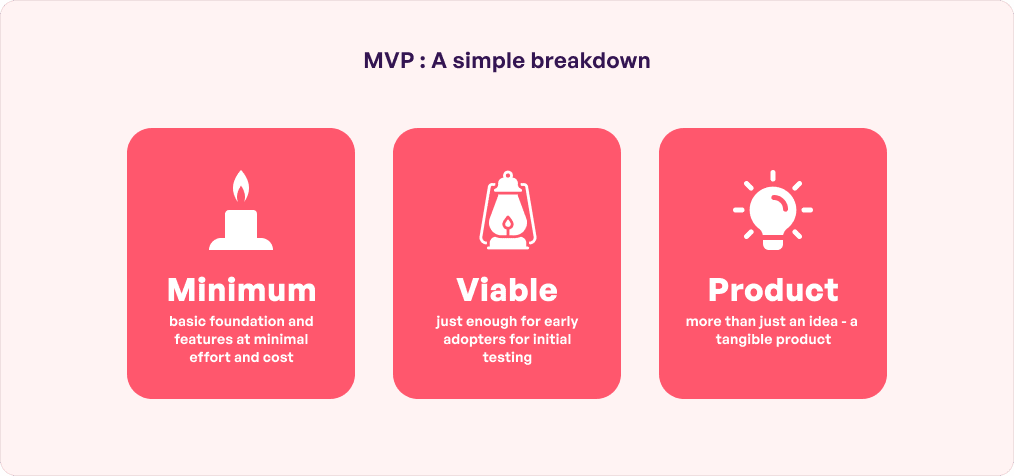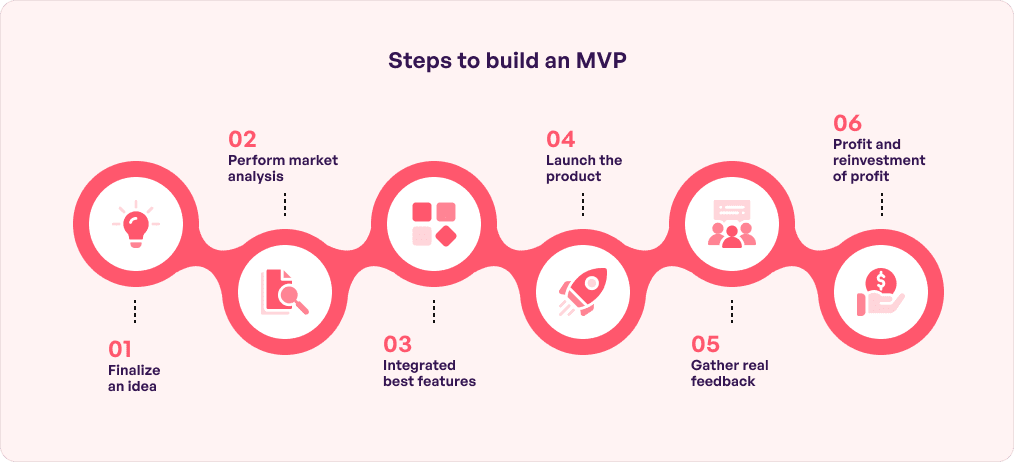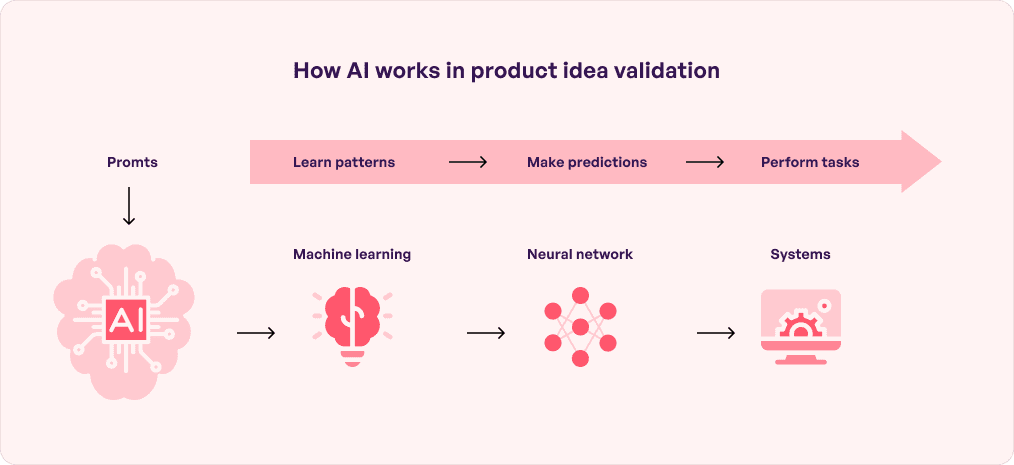There are two types of entrepreneurs. Ones who go all in with a product idea they believe in, cross their fingers and hope for the best. The second who runs a thorough market research to ideate, plan, build, and only then deploy a digital product. Now the probability of the first category entrepreneurs to succeed, while there, is extremely luck based. On the other hand, the second category entrepreneurs have greater chances of success owing to the efforts they have put in the homework. But how do you transition from being category one entrepreneur to category two? The answer to this is validating the digital product idea.
Here’s a little sneak peak into why it is important? According to a recent find by Businessofapps, the cost of developing a medium complexity app is between $32K to $48K and the number of applications in the stores has grown to 2.18 million in App Store plus 2.65 million on the Play Store. This combination has created a situation where one wrong decision can fail your app when you launch it in the overcrowded app stores.
So, digital product validation comes as an ideal solution to addressing this situation. However, know that innovation is fully achievable without risks.
Table of contents
What is digital product idea validation?
This means testing the performance, functionality, and market suitability of a product. It is further crucial to check how many products, similar to the one you want to launch, are out there and performing well in the market. An absence of these stages can have a dire impact on your business success. The latest data from the Bureau of Labor Statistics found that 1 out of 4 businesses fail during the first year of operation.
While we are not going into details behind the figure, it is a known fact that a failed digital product has the power to derail a business. So, one of the ways to de-risk your business and protect your capital investment is product idea validation via an MVP. Let us explain.
 Even when you build a market research backed digital solution, its success would depend on how effectively you answer these four questions before building an MVP –
Even when you build a market research backed digital solution, its success would depend on how effectively you answer these four questions before building an MVP –
- Do enough people want it?
- Are those people willing to pay for it?
- Does the app have a unique value proposition?
- Can they find your digital product easily?
Let us look into the ways you can get answers to these questions by looking into how to create an MVP and then the digital product validation process.
The role of MVP in digital product idea validation
An MVP or minimum viable product is a strategy of validating digital product ideas. Quick solutions are created on a small budget and least time with just enough features. It is then launched and used as a tool to assess functionality and market viability. This way, entrepreneurs do not have to just depend on a hazy idea to make better decisions. Here’s how an MVP is built.
 An MVP is perfect to understand how innovative your digital product would be. It is further refined with real-world feedback from early adopters. This tangible demonstration of market demand lowers the risks of failure and prevents the loss of big capital investment.
An MVP is perfect to understand how innovative your digital product would be. It is further refined with real-world feedback from early adopters. This tangible demonstration of market demand lowers the risks of failure and prevents the loss of big capital investment.
The basic steps to create an MVP includes determining the following: the target issue, the target audience, initial features, design and prototype, and finally testing the MVP before releasing it before the public. Post this, entrepreneurs and product developers together have to monitor and analyze the product to make the necessary changes
How is AI used in MVP to validate a product idea?
Using AI in MVP means better quality, quantity, and relevance of your data. This is a way to improve the effectiveness of your initial product to a great extent. Artificial intelligence combined with machine learning also helps entrepreneurs predict user needs and refine product features. This is done by complex data learning and model training. Altogether, a data-driven approach makes your MVP more user-focused.
 At Simublade, we are a software development company that creates well-strategized artificial intelligence solutions. Learn about our AI services to understand how we put your idea under the technology and market viability microscope for an efficient MVP.
At Simublade, we are a software development company that creates well-strategized artificial intelligence solutions. Learn about our AI services to understand how we put your idea under the technology and market viability microscope for an efficient MVP.
The ways of validating digital product ideas
On papers, validating an app idea is fairly straightforward. You look into the competition, talk to your prospective user base, and run technical feasibility tests to get a clarity on whether your digital product will be accepted. In reality, it is a multi-phases process. And, this process is of utmost importance. Statistics say that the lack of idea validation for AR and VR hardware of Meta had once led to a loss of $230 billion. This had significantly dropped the company’s public shares by 26%.
 So, consider understanding and following these ways to validate your idea for your digital product to test if there is a market waiting for it. It is also the first step to ensure a successful digital transformation.
So, consider understanding and following these ways to validate your idea for your digital product to test if there is a market waiting for it. It is also the first step to ensure a successful digital transformation.
Define user personas
One of the sure shot ways to validate a product idea is to fix the user persona and check if your app idea would meet their needs. At Simublade, we identify and combine both demographics and psychographic information of your prospective users while building a user persona to validate your digital product idea. While the demographic side of a persona consists of information around age, gender, profession, income, and in some cases marital status, the psychographic profile is much more in-depth. In case of psychographic persona creation, we look into the users’ goals, their motivators, pain points, attitudes, frustrations, and create a rough look into their day – highlighting the instance where they will use your application.
Getting user persona right has plenty of benefits like remembering and relating to your potential users and making informed choices instead of assumptions.
Once you have drafted the user persona, the next step that comes is putting your application in the center of their life and measuring the scope of acceptance.
Market size estimation
Would you build an app if there were 1 million potential customers vs if there were 1,000 users? I am sure you would go for the former. But how to estimate that approximate number? The best approach is by looking into the number of people talking about your idea or product concept through any keyword research tool.
You can enter the primary keyword, in this case {your app category} + {app} in keyword research tools like Google Keyword Planner or Semrush and look into its search volume in your selected region.
Now, it is one thing to know the current demand of your application’s concept and completely another to gauge the future demand of the idea. The solution to this again lies with performing past data market research through platforms like Google Trends.
Users’ willingness to pay
The demand for an application or digital product is irrelevant for a business if the sector’s audience is not willing to pay for using it. So how to figure out the highest amount that customers can spend? For this you have to really know them. So, conduct surveys to gather both qualitative and quantitative data. A few questions to include are:
- What would you use our product for?
- Will you use it individually or as a part of a team?
- What would you wish to achieve using our app?
- How often would you use our product?
Further, you can check competitor apps and divide their total revenues by total downloads. The resultant number will give you an estimate into users’ willingness to pay and the amount they are comfortable with.
In addition to this, platforms like Sensor Tower and App Annie also offer services around tracking revenues earned through in-app purchases. Using these platforms will give you an idea of what to expect from your application concept in terms of revenue.
Scope of entry
A key part of product concept validation is to know if there is a scope for new apps to enter the category. Here are a few ways to find a concrete answer to this question.
- Look into the age of the apps active in the category. If the majority of the category is made up of old applications, it is a good sign that it is difficult for a new application to enter the market since it’s highly competitive.
- Look into the competitor apps’ reviews and ratings. If the users are not enjoying these apps, chances are, they will be willing to put in their money and time into new solutions that address those issues perfectly.
- Look at the reliance on advertisements. If the top applications of your category are investing heavily on advertisements, you can be rest assured that you will also have to compete for that ad space to get your users’ attention.
Why should you consider digital product idea validation?
When you validate a product idea, you take guesswork out of the equation. Below are the compelling benefits of considering an idea validation strategy.
Better customer connection
The main idea behind product idea validation is to figure out if it truly resonates with your potential customers. When you release an MVP after proper quality assurance and work on the feedback, you listen to what your customers want. This accurately includes their pain points and their needs. Implementing what is important for them is a fantastic way to build trust and show them that you are a brand that cares. It also protects you from creating software that nobody wants. Altogether, this paves the way for long-term success.
Quicker to market
The MVP development approach is a quick entry to the marketplace. Entrepreneurs are able to enter, test, learn, and refine – all with minimal effort instead of sophisticated coding, UI UX designs, and cybersecurity measures. MVP means to :
- speed up the process of turning an idea into a viable product
- gather the required information, and
- carry on with the later developmental stages.
This offers a competitive advantage since you gain a strong brand recognition for delivering great customer value. It is especially true in case your company is the first one to introduce a new product to the market. Otherwise too, bringing a product with a unique value proposition like mindblowing performance and superior aesthetics than products of fellow brands can help you leave an indelible mark on customers’ minds.
Risk management
Traditional methods like a digital product simply breaking into the market has significant risks. This includes waste of time and resources that were invested. Here’s proof. Studies have found that 95% of new products fail since it seems that entrepreneurs do not know how to launch successfully. So, what typically goes wrong? By adding too many functionalities, it gets difficult to focus on the true purpose of the software. Therefore, it is ideal to consider an MVP solution first for product validation early in the development process.
Cost effectiveness
Product concept validation with MVP begins with a minimum set of features. This is ideal to maximize the invested capital wisely. Wondering why? Well, the expenses are spread out over a period of time which acts as a cushion for your budget. Further, the earnings from this MVP validation stage can be reinvested to boost revenue. Overall, product idea validation ensures low financial commitment to expand the chances of improvements based on customer behavior and demands. It is also easier to experiment first to understand where to put the resources and money to achieve the best results.
Otherwise, a mature product involves detailed development and years of slogging with a price tag that matches the time and effort.
What are the common challenges you come across during a product idea validation?
The first and foremost challenge of a digital product idea validation is figuring out if it is solving a real-world problem. Next, one might find it difficult to encourage the adoption of the MVP to test the market viability. Further, getting the accurate response from early users could be a bottleneck in the process. Lastly, the required tools and techniques for the validation stage might not be accessible.
The one-stop solution to this is outsourcing MVP creation to experts at Simublade. We wipe out the fear of zero market acceptance by using robust and scalable tech-stacks. It includes back-end, front-end, mobile, database, and infrastructure. The process we follow includes design, prototype, development, testing, and market analysis. The cost of building an MVP will be anywhere between $20K and $50K.
How does Simublade help entrepreneurs with digital product idea validation?
In our role as a digital product design company, we have helped a number of startups, across industries, solidify their digital product concept at the back of a detailed market and technical feasibility check. The way we do that is through our extensive discovery workshop session which involves implementation planning, goals understanding, target market study, product ideation, priority-based feature finalization, and user flow diagram.
All of these forms a critical part of our digital product development process. In this phase, experts at our software development company run a competitive and market analysis on your application. This helps to ensure that your USPs are clearly defined plus accepted in the digital space. Additionally, we involve real users in the process to check that the concept you are planning to build is aligned with their goals and motivations.
Our research and business analysis teams work with you on establishing market validation and our tech team monitors the solution’s technical readiness on platforms you are planning to launch the solution on. Lastly, they ensure that the feature and functionalities you are planning to add are actually buildable.
FAQs
Q. What is product idea validation?
Ans. Digital product ideal validation is an approach to test the market viability of a product. This requires a basic framework with just enough features, aesthetics, and coding to check user adoption extent. Simublade is a software development company that helps you achieve it with MVP design and development before a full-fledged launch.
Q. What are the 4 steps for idea validation?
Ans. 4 steps to validate your digital product idea : market research for user persona, create a product prototype, create a landing page for users, and collect feedback to improve.
Q. Why should you validate your digital product?
Ans. Product validation is necessary to understand whether a digital product will survive and thrive in the market. Entrepreneurs also get an idea on the existing gaps in the product and the areas of improvement. A standard digital product design agency can help you achieve the same by creating an MVP with product USPs to test the waters.




